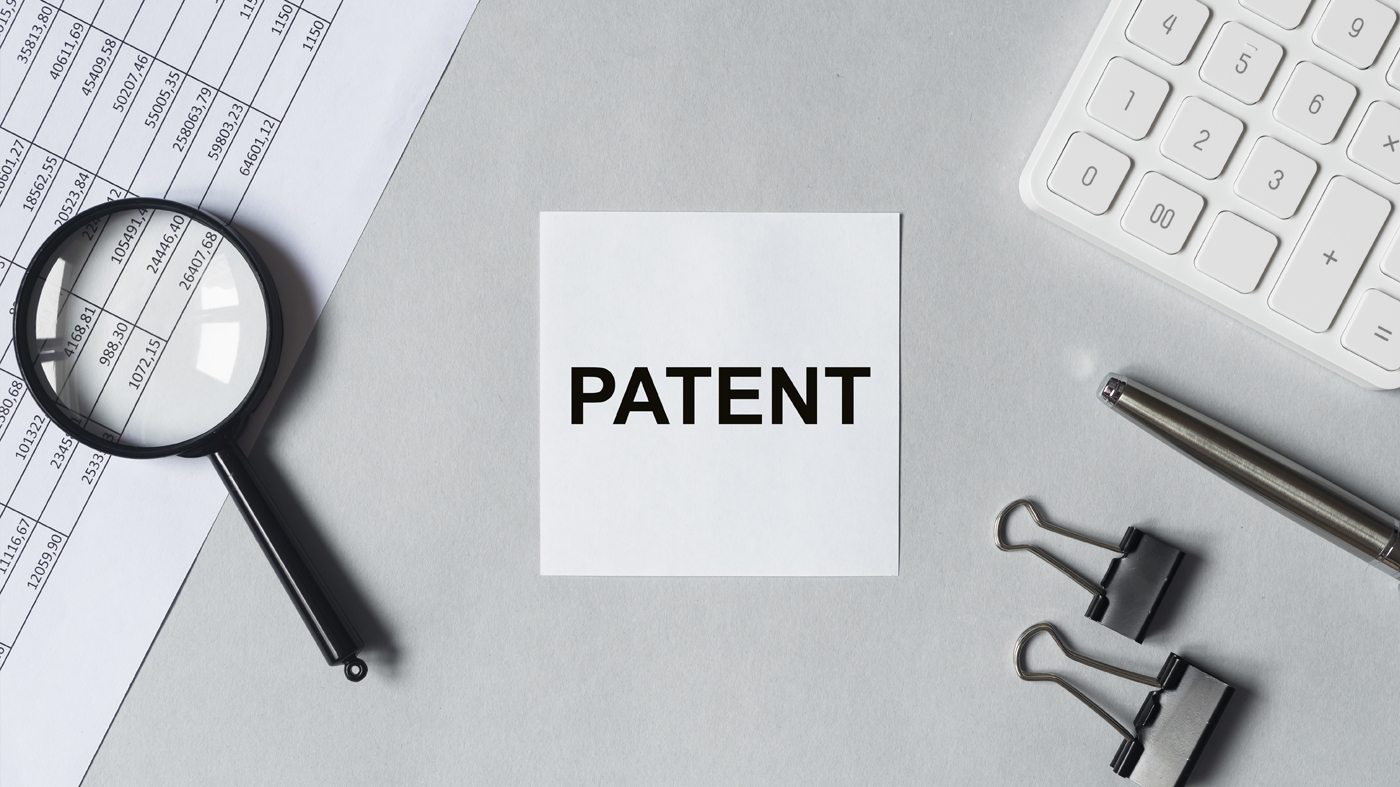Patent and trademark are two concepts that we often see together, making it common for them to be confused as if they were synonyms. In fact, patents and trademarks are granted by the same office; however, they are not identical and serve different purposes. In this post we will explain what the two terms mean and how they differ.

What is a patent?
Part of the meaning of the term patents are original inventions that can be applied in industry. This means that the patent must be new, that is, it must not exist anywhere in the world before. It must also be inventive and not the result of combining other previous inventions. And it must be capable of industrial application.
In addition, the patent is a right granted exclusively by a state to the inventor of a new technology or product that can be used commercially, for a limited period of time. This means that only the owner of the patent (who may or may not be the inventor) can profitably use that technology or patented product, for profit and that only he or she can authorize the use of his or her invention by third parties and set the conditions for doing so.
An example of a patent you have probably seen in the news is the Daedalus Mark 1, an Iron Man-style suit that allows a person to fly like that superhero; its inventor is Richard Browning, and this suit is currently the subject of an international patent application.
Other well-known examples of patents that are very present in our daily lives are the GPS navigator, Bluetooth or Velcro (the latter is already in the public domain).
What is it good for?
As already mentioned, the patent serves the commercial exploitation of an invention with industrial application. The inventor or owner of the patent has the exclusive right to exploit this invention for a limited time, so that no one else can make money from it or use it without the consent of the inventor or owner.
Thus, the owner of a patent has the following rights:
The expiration of the patent
As we have already mentioned, the patent has a definite term, namely 20 years, which is also non-renewable. Therefore, when the patent on an invention expires, it can already be used if the prior consent of the patent holder has been granted.
The purpose of this patent expiration is so that society as a whole can benefit from the invention and continue to develop.
What can be patented and what can not?
Remember that not everything can be patented, so the following things are excluded:
Part of the meaning of the term patents are original inventions that can be applied in industry. This means that the patent must be new, that is, it must not exist anywhere in the world before. It must also be inventive and not the result of combining other previous inventions. And it must be capable of industrial application.
In addition, the patent is a right granted exclusively by a state to the inventor of a new technology or product that can be used commercially, for a limited period of time. This means that only the owner of the patent (who may or may not be the inventor) can profitably use that technology or patented product, for profit and that only he or she can authorize the use of his or her invention by third parties and set the conditions for doing so.
An example of a patent you have probably seen in the news is the Daedalus Mark 1, an Iron Man-style suit that allows a person to fly like that superhero; its inventor is Richard Browning, and this suit is currently the subject of an international patent application.
Other well-known examples of patents that are very present in our daily lives are the GPS navigator, Bluetooth or Velcro (the latter is already in the public domain).
What is it good for?
As already mentioned, the patent serves the commercial exploitation of an invention with industrial application. The inventor or owner of the patent has the exclusive right to exploit this invention for a limited time, so that no one else can make money from it or use it without the consent of the inventor or owner.
Thus, the owner of a patent has the following rights:
- He can specify and determine who may use the patented invention during the term of the patent.
- Allow or license third parties to use the invention under the conditions set by the holder.
- To sell the patent to a third party.
The expiration of the patent
As we have already mentioned, the patent has a definite term, namely 20 years, which is also non-renewable. Therefore, when the patent on an invention expires, it can already be used if the prior consent of the patent holder has been granted.
The purpose of this patent expiration is so that society as a whole can benefit from the invention and continue to develop.
What can be patented and what can not?
Remember that not everything can be patented, so the following things are excluded:
- Mathematical methods.
- Scientific theories or principles.
- Discoveries of natural substances or elements already found in nature but unknown to mankind.
- The methods and rules of a mental activity.
- Living things as they occur in nature.
- The rules and regulations of a game.
- Literary, aesthetic or artistic works protected by copyright.
- Software programmes protected by copyright.
- The forms of presentation of information.
- Surgical, therapeutic or diagnostic treatments for the human body and for animals.
- Biological or genetic material.

Trademark or trade name
In Spain, the trademark and trade name are regulated by Law 17/2001 on Trademarks, which establishes in Article 4 what a trademark is:
"signs, especially words, including personal names, drawings, letters, numbers, colours, the shape of the product or its packaging or sounds".
What is a trademark?
According to the legal definition, a trademark is a type of sign (it can be a name, a logo or even a sound) that can be used to determine the origin of a product or service. In other words, it identifies the company that manufactures or lends it.
What is it used for?
A brand serves to distinguish a company's products and services from those of its competitors in the marketplace.
The trademark can be registered for a single product or service or for a range of products or services. A company may register multiple trademarks depending on the products or services it manufactures, offers, or distributes. For example, a car manufacturer has its "core brand" and then each car model it makes has its own trademark (Ford > Ford Focus).
Trademarks, therefore, serve to protect the identity of the sign and to ensure that consumers can clearly distinguish between the same or similar products but from different manufacturers.
Types of marks
There are different types of trademarks, depending on their purpose and on the sign they protect.
Depending on their purpose, there are product and service marks, also called individual marks. Collective marks and guarantee marks.
Depending on their format we have:
Nominative Markers
Nominative (or denominative) marks are those formed exclusively of words or letters, numbers in standard characters, without any other type of graphic, layout or color features.
For example, Samsung, LG, Sony, Ford or El Corte Inglés.
Figurative marks
Figurative marks are signs made up of words, letters or numbers with characters, stylization or non-standard layout, which may or may not include graphic or color elements, made up exclusively of graphic elements.
An example is the logo of Nike, Adidas or the Lacoste crocodile.
Mixed brands
Mixed brands contain both the logo and the name; for example, the Corte Inglés brand with its green triangle logo and within the name with its own typography.
Three-dimensional trademarks
Three-dimensional trademarks are those that, as the name suggests, have a three-dimensional shape. And what is meant by this? It can be the protection or the packaging of the product. They arise from the need to avoid consumer confusion when two products have a similar appearance.
The first three-dimensional trademark was the classic Coca-Cola bottle.
Sound marks
Sound marks are marks that consist solely of a sound or series of sounds. For example, the sound of Nokia phones.
How often must the trademark and/or trade name be renewed?
The trademark and/or trade name has a term of 10 years, after which it can be renewed for another 10 years, without any limit.
In Spain, the trademark and trade name are regulated by Law 17/2001 on Trademarks, which establishes in Article 4 what a trademark is:
"signs, especially words, including personal names, drawings, letters, numbers, colours, the shape of the product or its packaging or sounds".
What is a trademark?
According to the legal definition, a trademark is a type of sign (it can be a name, a logo or even a sound) that can be used to determine the origin of a product or service. In other words, it identifies the company that manufactures or lends it.
What is it used for?
A brand serves to distinguish a company's products and services from those of its competitors in the marketplace.
The trademark can be registered for a single product or service or for a range of products or services. A company may register multiple trademarks depending on the products or services it manufactures, offers, or distributes. For example, a car manufacturer has its "core brand" and then each car model it makes has its own trademark (Ford > Ford Focus).
Trademarks, therefore, serve to protect the identity of the sign and to ensure that consumers can clearly distinguish between the same or similar products but from different manufacturers.
Types of marks
There are different types of trademarks, depending on their purpose and on the sign they protect.
Depending on their purpose, there are product and service marks, also called individual marks. Collective marks and guarantee marks.
Depending on their format we have:
Nominative Markers
Nominative (or denominative) marks are those formed exclusively of words or letters, numbers in standard characters, without any other type of graphic, layout or color features.
For example, Samsung, LG, Sony, Ford or El Corte Inglés.
Figurative marks
Figurative marks are signs made up of words, letters or numbers with characters, stylization or non-standard layout, which may or may not include graphic or color elements, made up exclusively of graphic elements.
An example is the logo of Nike, Adidas or the Lacoste crocodile.
Mixed brands
Mixed brands contain both the logo and the name; for example, the Corte Inglés brand with its green triangle logo and within the name with its own typography.
Three-dimensional trademarks
Three-dimensional trademarks are those that, as the name suggests, have a three-dimensional shape. And what is meant by this? It can be the protection or the packaging of the product. They arise from the need to avoid consumer confusion when two products have a similar appearance.
The first three-dimensional trademark was the classic Coca-Cola bottle.
Sound marks
Sound marks are marks that consist solely of a sound or series of sounds. For example, the sound of Nokia phones.
How often must the trademark and/or trade name be renewed?
The trademark and/or trade name has a term of 10 years, after which it can be renewed for another 10 years, without any limit.




